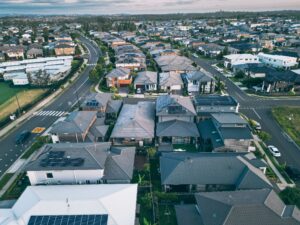Trigg Minerals (ASX: TMG) and the Antimony Boom: A Strategic Opportunity in Critical Minerals

Trigg Minerals (ASX: TMG) surged nearly 10% in early July 2025 after announcing a robust exploration target at its Antimony Canyon project in Utah. The sharp move wasn’t driven by hype; it reflected a growing recognition of antimony’s rising importance in global supply chains.
The project places Trigg in a favourable position at a time when Western economies are urgently seeking alternatives to China’s dominance in critical minerals. With the spotlight turning toward antimony as a strategic resource, early-stage explorers with credible assets in stable jurisdictions are beginning to attract serious attention.
As antimony prices strengthen and geopolitical risks escalate, Trigg’s latest update signals more than just exploration potential; it highlights the company’s emerging relevance in a market that’s gaining momentum fast.
Why Antimony Matters More Than Ever
Antimony has quietly become one of the most strategic resources in the global push for supply chain security, and it’s no longer flying under the radar.
Best known for its use in flame retardants, antimony also plays a key role in defence technology, semiconductors, and next-generation batteries, particularly those used in electric vehicles and grid-scale energy storage. It improves battery performance, enhances alloy strength, and increases resistance to heat and corrosion—traits critical to modern manufacturing and national defence.
But availability is becoming a problem.
According to The Guardian, roughly half of the world’s antimony supply still comes from China. And with rising geopolitical tension and growing demand from the West, the market is feeling the squeeze. In just a few years, prices have surged from around US$15,000 per tonne to over US$60,000 per tonne—an astonishing four-fold increase that highlights how tight the market has become.
Adding to the challenge is the fact that much of the world’s remaining antimony comes from jurisdictions with high ESG risks, such as Myanmar, making it harder for Western buyers to secure an ethical, traceable supply. As governments in the US, EU, and Australia ramp up their lists of critical minerals, antimony continues to rank high.
What makes this moment particularly interesting is that antimony isn’t easily substituted. Its properties are unique, especially in its use in military-grade alloys and heat-resistant materials. That makes it indispensable and irreplaceable, in applications ranging from ammunition to EV battery chemistries.
With China’s dominance increasingly seen as a vulnerability rather than an asset, Western nations are under pressure to develop new, localised supply chains. That’s where early-stage developers like Trigg come in. Projects based in politically stable, mining-friendly jurisdictions are now viewed as potential strategic assets, not just speculative exploration plays.
In short, antimony’s rise is being driven by more than market demand. It’s part of a broader geopolitical realignment in how the world approaches critical minerals. And for companies that can offer a credible path to production outside China, the upside could be significant.
Trigg’s Antimony Play: A Well-Timed Shift
Trigg Minerals isn’t just chasing a trend; it’s building a portfolio aligned with the structural shift in global critical mineral demand. At the centre of that strategy is the Antimony Canyon Project in Utah, where Trigg recently outlined an exploration target of 12.8 to 15.6 million tonnes, grading between 0.75% and 1.5% antimony. These numbers place the project firmly on the radar for investors seeking early exposure to a secure North American supply source.
The significance of this asset lies not only in the resource potential but in location. Utah is one of the most mining-friendly jurisdictions in the world, with access to infrastructure, a skilled workforce, and growing political support for domestic critical minerals production. In a market where jurisdictional risk is as important as grade, this matters.
But Trigg’s antimony story doesn’t end in the US.
The company also holds two promising Australian assets: the Achilles and Bukkulla polymetallic projects in New South Wales. Of particular note is White Crystal Creek (WCC), part of the Bukkulla project. According to The Market Bull, WCC is currently considered Australia’s highest-grade undeveloped antimony resource. With known mineralisation at the surface and historical drill results supporting further exploration, this could become a key domestic asset in a country now fast-tracking its own critical minerals strategy.
By securing exposure across both US and Australian jurisdictions, Trigg is building optionality into its portfolio. The diversified footprint helps reduce geopolitical risk, while positioning the company to capitalise on government support programmes in both countries. It’s a strategy that aligns well with where capital is currently flowing, into critical minerals projects backed by transparent supply chains, low sovereign risk, and the potential to meet rising Western demand.
Investor Signals: Drilling Underway and Policy Winds Shifting
Trigg’s recent momentum isn’t just about speculation; it’s being driven by clear, visible progress on the ground. The company has kicked off fieldwork at its Antimony Canyon Project in Utah, where surface sampling has already confirmed encouraging grades. A focused drilling campaign is now underway, and the market is watching closely. The first set of drill results, expected in the coming months, could be a major turning point, either confirming the project’s scale or reshaping investor expectations.
This activity comes at a time when critical minerals are squarely in focus for governments and investors alike. In both the United States and Australia, new funding mechanisms, streamlined permitting, and national security priorities are pushing critical mineral projects up the priority list. Antimony, in particular, is receiving fresh attention as defence departments and energy storage developers scramble to secure non-Chinese sources.
Equally important is the shift in sentiment around ESG. Much of the world’s current antimony supply comes from Myanmar and China, regions where environmental damage, poor labour practices, and supply uncertainty are ongoing concerns. Investors and buyers are now actively seeking cleaner, more transparent sources. Trigg’s projects, located in stable, well-regulated jurisdictions, immediately stand out in that context.
Trading volumes in TMG have already started to reflect this shift. The company’s July price action suggests growing interest from investors looking to front-run a possible re-rating, particularly if drill results come back strong.
With field activity accelerating and geopolitical tailwinds building, Trigg is entering a period where each new update could meaningfully reshape how the market values its critical minerals exposure.
What’s Next for Trigg Minerals?
There’s no denying that Trigg is still in the early stages of its critical minerals journey. But that also means we’re looking at a potential ground-floor opportunity if the pieces fall into place.
Key near-term catalysts to watch include:
Initial drill results from Canyon, Utah: These could validate the high-grade surface samples and turn the exploration target into a JORC-compliant resource.
Environmental approvals in the US and Australia: Any progress on permitting will de-risk Trigg’s assets and potentially bring in strategic partners.
Investor or government funding: Given the national interest in critical minerals, a grant or JV deal would be a major vote of confidence.
Offtake agreements or strategic alliances: These may follow drill confirmation and would signal the market’s faith in Trigg’s project economics.
But let’s be clear, there are risks too. Community pushback, particularly in the US, remains a possibility given the tight regulatory landscape in Utah. Financing exploration programmes will also require ongoing shareholder support or access to government backing.
Still, we believe these risks are not unique to Trigg. Rather, they reflect the nature of early-stage resource investment, and with antimony trading near decade-highs, the risk/reward profile is becoming more attractive.
Is Trigg Minerals a Good Stock to Buy?
Trigg Minerals offers one of the clearest plays on antimony available on the ASX, a metal quickly gaining strategic importance in defence, energy storage, and industrial applications.
Its flagship project in Utah aligns well with the US push to onshore critical mineral supply chains, while its Australian assets add depth and jurisdictional balance. That combination strengthens the investment case at a time when buyers are looking for secure, transparent sources of supply.
Unlike trend-driven explorers chasing the next battery metal boom, Trigg is targeting a genuine supply gap in a market with limited competition. Antimony’s scarcity and growing geopolitical relevance make that a valuable position.
The company remains in early-stage development, so risks around funding and resource definition still apply. But with drilling underway and global demand shifting fast, Trigg is well-placed to benefit if it delivers on its next milestones.
Final Takeaway
Critical minerals are no longer optional. They’re foundational to everything from electric vehicles to defence systems, and antimony sits at the heart of that equation.
Trigg Minerals (ASX: TMG) has carved out a unique niche as one of the only ASX players with real antimony exposure in geopolitically aligned jurisdictions. It’s early, yes, but the groundwork is being laid for something much bigger.
For investors seeking exposure to critical minerals outside the overhyped lithium and rare earths space, Trigg is worth a close watch. Monitor drill results closely, pay attention to regulatory updates, and don’t underestimate how fast sentiment can shift when the market catches on to a new strategic metal. We believe the antimony story is just getting started. And Trigg could be one of its key narrators.
What are the Best ASX Stocks to invest in right now?
Check our buy/sell tips

FAQs
- What is antimony used for?
Antimony is used in flame retardants, semiconductors, EV batteries, and defence applications. Its unique properties make it a key enabler in high-performance materials and electronics.
- Why is antimony considered a critical mineral?
Governments in Australia, the US, and the EU have labelled antimony “critical” due to its essential uses and concentrated supply from China and Myanmar, which pose geopolitical and ESG risks.
- What is Trigg Minerals’ main antimony project?
Trigg’s flagship antimony asset is the Canyon Project in Utah, USA. It also holds the high-grade White Crystal Creek deposit in NSW, Australia.
- How much antimony does Trigg believe is at Canyon?
The company has outlined an exploration target of 12.8–15.6 Mt at 0.75–1.5% Sb antimony. These grades are considered significant for global standards.
- Is Trigg receiving government support?
While no funding has yet been confirmed, its projects fall within priority themes for both the US and Australian government initiatives in critical minerals.
Blog Categories
Get Our Top 5 ASX Stocks for FY26
Recent Posts
Diversifying Portfolios with ASX Consumer Stocks: Opportunities and Risks
The ASX 200 has delivered significant volatility recently, and market participants observing the screens in 2025 understand the turbulence firsthand.…
Is Lendlease (ASX:LLC) out of the doldrums for good?
Lendlease (ASX:LLC) has for the past several years been the classic definition of a ‘value trap’. You think a good…
Here are the 2 most important stock market taxes that investors need to be aware on
As one of two certainties in life, investors need to be aware of stock market taxes. Investors may be liable…


